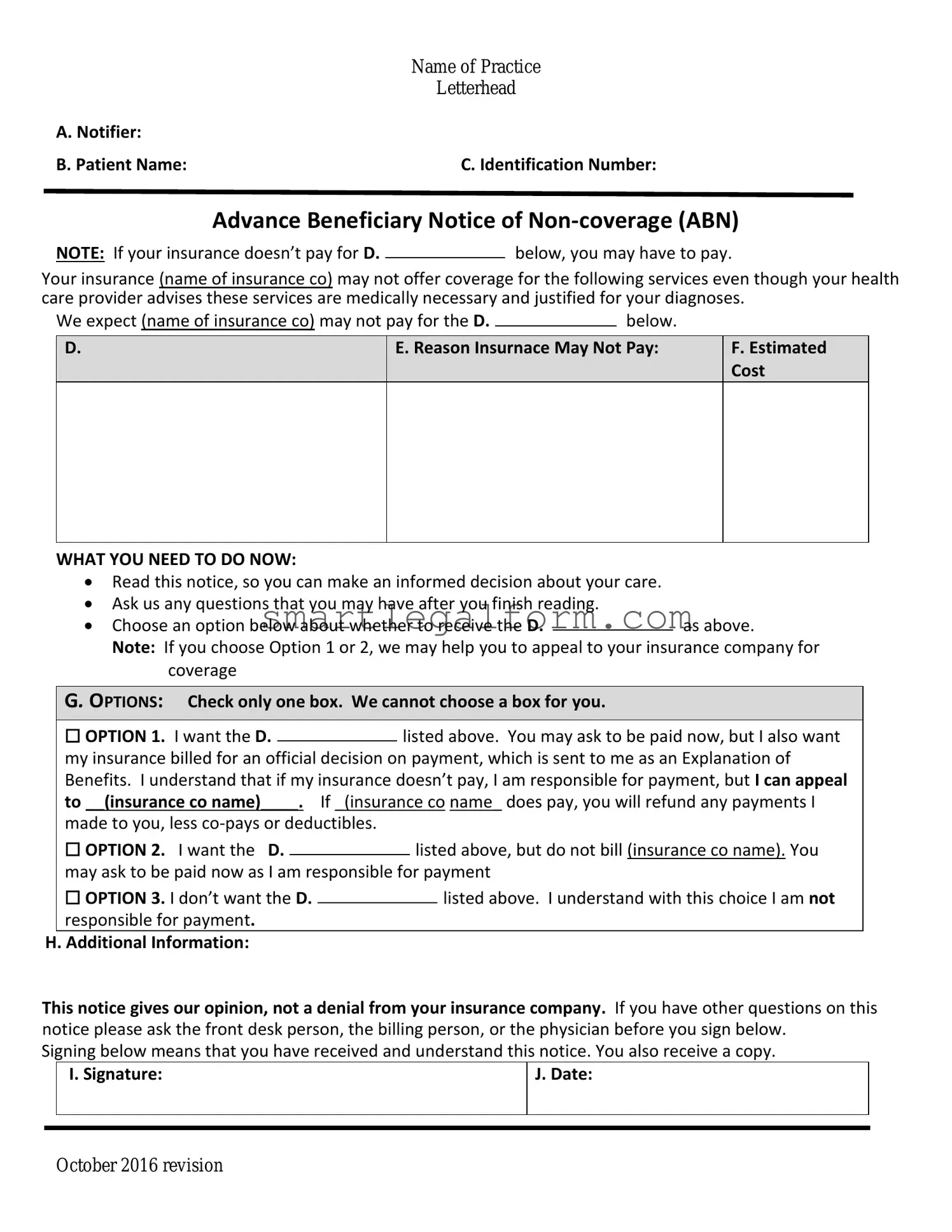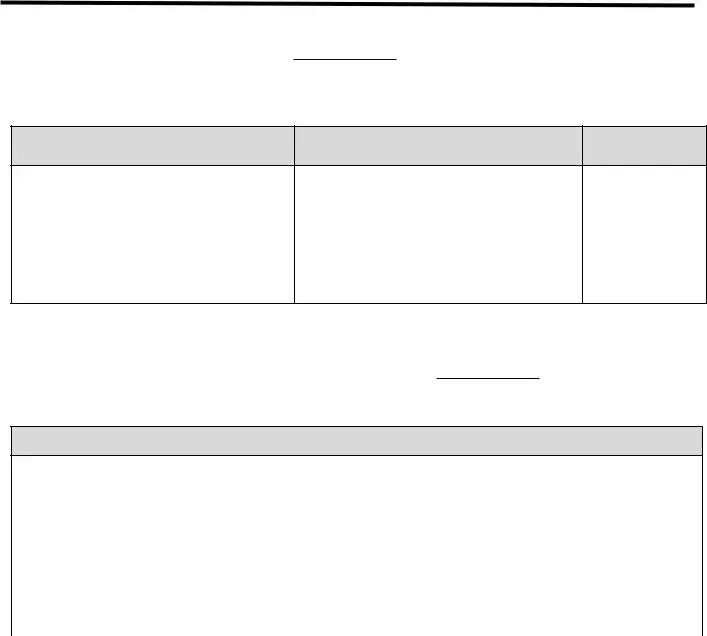Filling out the Advance Beneficiary Notice of Non-coverage (ABN) form can be a straightforward process, but many individuals make common mistakes that can lead to confusion and potential issues with Medicare coverage. One frequent error is not providing all necessary information. When filling out the form, ensure that you include your name, Medicare number, and the date. Missing any of these details can delay processing.
Another mistake is failing to check the appropriate box regarding the service in question. The ABN has specific options to indicate whether you agree or disagree with the potential non-coverage of a service. If this section is left unchecked, it creates ambiguity and may lead to unexpected billing.
Many people also overlook the importance of signing and dating the form. A signature is crucial as it indicates your acknowledgment of the information provided. Without it, the form may be considered incomplete. Always remember to date your signature to establish a clear timeline.
Some individuals mistakenly assume that they do not need to keep a copy of the ABN. Retaining a copy is essential for your records. It serves as proof that you were informed about the potential non-coverage and can help resolve any future disputes with Medicare.
Another common issue arises from misunderstanding the implications of the ABN. Many believe that signing the form means they will automatically be responsible for payment. This is not always the case. The ABN simply informs you that Medicare may not cover the service, but it does not guarantee that you will have to pay out-of-pocket.
People sometimes rush through the form without reading the instructions carefully. Each section of the ABN is designed to provide clarity about the service and coverage. Ignoring these instructions can lead to mistakes that complicate the process.
Failing to communicate with the provider is another mistake. If you have questions or concerns about the service or the form itself, reach out to your healthcare provider for clarification. Open communication can prevent misunderstandings and ensure that the form is completed correctly.
Some individuals neglect to review the completed form before submission. Take a moment to double-check all entries for accuracy. Small errors can lead to significant issues down the line.
Lastly, many forget that the ABN is not a one-size-fits-all document. Each situation is unique, and the form should be tailored to reflect the specific service being provided. Ensure that the details align with the service in question to avoid complications.

